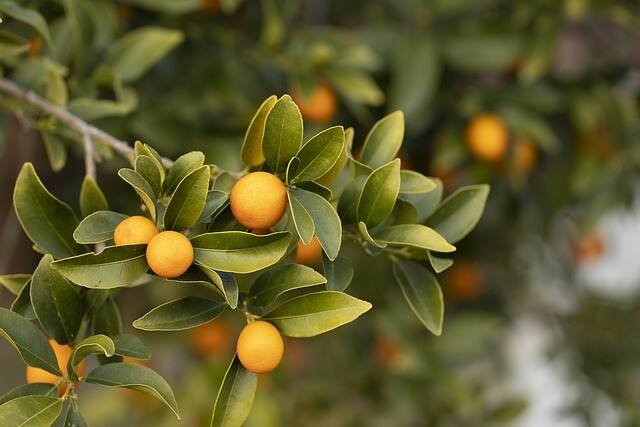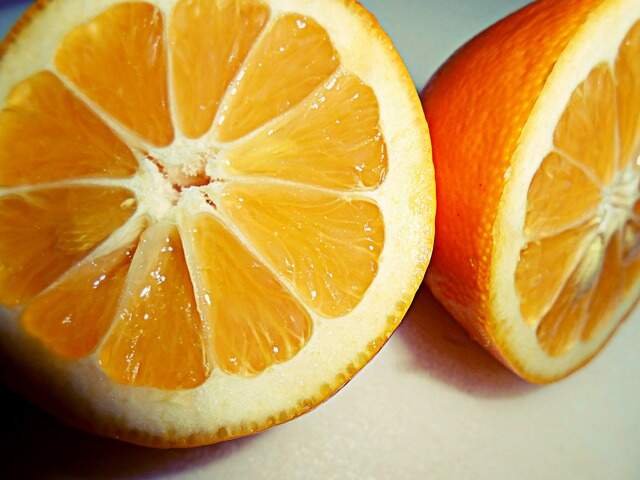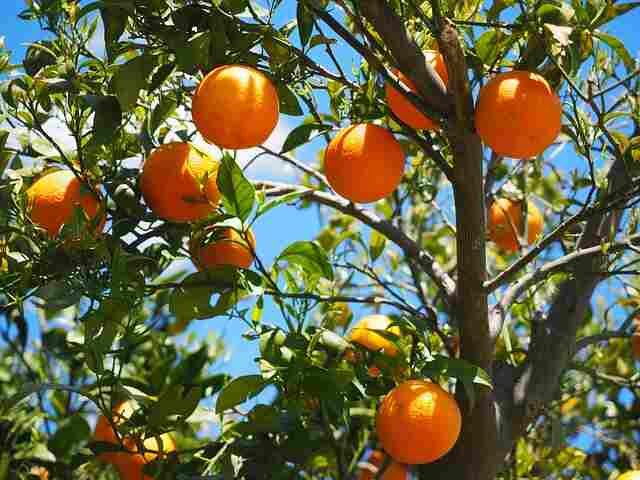What’s going on, gardeners? On today’s article, I’m going to show you five different varieties of super cold-hardy citrus that you can be growing in your backyard in climates that get all the way down to 10 degrees Fahrenheit, maybe even a little bit colder, that maybe you have no idea that you could be growing. So let’s get into it.
There are plenty of super high-quality commercial citrus varieties out there that are not cold-hardy at all. But there are also a ton of weird citrus hybrids out there that are extremely cold-hardy but don’t have good flavor or have an unpleasant aftertaste and a ton of seeds. We’re trying to find those citrus varieties in the middle that are super cold-hardy but also have super high-quality, nearly seedless fruit. Luckily, these citrus varieties are readily available. The problem is there is just terrible documentation out there about how cold-hardy these varieties really are, and I’ve done all of the work for you.
I’m growing these all in-ground here in Zone 8a where we can get down as cold as 10 degrees Fahrenheit. In fact, I think you can grow these varieties even in some very southern Zone 7b’s like Huntsville, Alabama, or Atlanta, Georgia, or Charlotte, North Carolina, where it can get cold at night briefly but it pretty much always comes above freezing during the day. And I think that’s key. It’s getting out of those freezing temperatures during the day that really makes this possible because they can take brief but not prolonged durations at these temperatures.
Now when I say you can grow these in-ground in climates as cold as 10 degrees Fahrenheit, you will need to protect them a little bit. But I’ve also done the legwork for you on this, and it is a very simple process. But basically, all you need is a plant jacket and a heat source underneath your citrus trees in order to build heat to keep them warm at night. And those plant jackets are completely breathable. All you have to do is put incandescent lights or get yourself a 60-gallon used pickle barrel and fill it up with water as a heat source, and the lights or the pickle barrel will radiate the heat all night long underneath the plant jacket, which locks it in.
My favorite thing to do is actually to combine the two. You put the incandescent Christmas lights on your trees, you put a pickle barrel full of water underneath it, and then you throw your plant jacket on. And that way, if you ever get a power outage during an ice storm, the pickle barrel will still keep them warm. So essentially a secure technique can add 10 to 15 levels of warmth. It’s a truly straightforward cycle, and I clear up how for do it in that playlist. Also, assuming you believe it’s an excessive amount of work, think about this: since you’re developing these assortments beyond their local reach, you are compensated with basically no regular nuisances by any means. So in the event that you’re simply ready to put this smidgen of legwork in to keep them alive throughout the colder time of year, you are basically given a totally upkeep free plant in any case, beside pruning and perhaps some pyrethrin once in a while for leaf excavator.
So let’s get on with the varieties.
Mandarin Orange

The first variety of citrus that I must share with you is hands down my favorite variety of citrus in existence, and that is the Owari Satsuma mandarin orange. This is the first citrus tree I ever bought and the first one I put in-ground. It is on its fourth season, and every year it rewards me with incredible crops of mandarin oranges. It’s super productive, it’s almost seedless, and the fruits are absolutely delicious. But the kicker is, when mature and established, it can survive unprotected in temperatures as cold as 12 degrees Fahrenheit. And that is incredible. I barely ever have to protect this tree. I really only turn the lights on to keep it warm when I know the temperatures are going to be 22 degrees Fahrenheit and or lower. And honestly, it could probably go even colder than that without protection, but I just like to be sure because I love this tree so much and I’m a little bit overly conservative with it. This fruit tree is the crown jewel of my garden. It’s the easiest, lowest maintenance, and most fruitful tree that I grow every year. It loads up with incredible amounts of fruit and rewards me even though I do almost nothing for it. Generally, the fruit ripens around Thanksgiving, so that’s late November to early December. However, the fruit holds on the tree very well, so I often wait as late as Christmas to harvest it because the longer you let the fruit ripen on the tree, the sweeter it tends to get.
Satsuma

The second variety of citrus that I highly recommend is the Brown Select Satsuma. Now, you may be thinking, why would I recommend two Satsuma varieties in a row? Well, that’s because this variety is equally as cold-hardy as Owari. It can survive down to 12 degrees Fahrenheit once fully established and mature. But it’s also two to three weeks earlier than Owari. So it’s possible to harvest fruit off of this tree in early to mid-November. And that is a great way to extend your citrus season and get a big jump on harvesting commercial quality, almost seedless citrus in your backyard garden. Now, this tree right here has only been in-ground for one year, and look how much citrus is already on here. It is fruiting like crazy. And honestly, I should probably thin it a little bit, but it’s carrying the load so well that I’ve let it go up to this point. I can’t believe how much fruit is on this baby tree. But it goes to show you how productive these young grafted Satsumas are. And like I said, it doesn’t get any more cold-hardy than this. And this is commercial quality, wonderful mandarin oranges with zipper skin, almost seedless that you can sell in any grocery store for a premium price. That’s why you have to consider Brown Select if you have room for two Satsuma trees. Those are the two varieties that I recommend.
Meiwa Kumquat
The third variety of citrus that I highly recommend you grow if you live in a marginal climate like I do is the Meiwa kumquat. Now, there are two very cold-hardy varieties of kumquat, at least two very cold-hardy varieties of kumquat: the Nagami kumquat, which is a very sour kumquat, and the Meiwa kumquat, which is a very sweet kumquat. This variety has no hint of sourness at all. You pick them and you eat them whole, skin and all. The skin is delicious. It is like sugary candy. It’s wonderful. The Nagami kumquat, on the other hand, has sweet skin, but the inside is very sour. So if you like sour citrus, that may be a better variety for you. Both varieties are cold-hardy down to 15 degrees Fahrenheit. It’s planted right next to my Brown Select Satsuma. It was planted at the exact same time. So this little tree is only a year old, and it sailed through last winter just fine. I have my pickle barrel water barrels right next to them. They get no electricity out here to keep them warm. All I do is I use the residual heat of these black water barrels, which heat up during the day. And then if it’s going to get significantly below freezing. It is super easy.My one-year-old Meiwa kumquat is loaded up with fruit. But this already fruited for me last year after I planted it in-ground. It was already loaded up with fruit mere months later. So this is another super fruitful early variety, and this tends to ripen more on an ever-bearing pattern and flower on a more ever-bearing pattern. So it’s a little less seasonal than your other varieties of citrus.
Cara Cara Red Navel Orange
The fourth variety of citrus that I highly recommend is one that I decided to try and push the envelope on, and so far the results have been amazing. And that is the Cara Cara red navel orange. Now, the Cara Cara red navel orange is basically just a mutated Washington navel orange that has a darker interior. And it is one of my favorite citrus on the face of the earth. It’s completely seedless inside and just amazingly delicious. Now, a lot of online resources say that this is only hardy to 28 degrees Fahrenheit. That is bunk. This is hardy somewhere between the 16 to 20 degree Fahrenheit range when it is fully established. And this is only a one-year-old tree. It’s hanging out here in the furthest distance from my yard with only this one water barrel to protect it. And we had a particularly difficult winter last winter. As I mentioned, all of these trees are only one year old as to this point. So last winter, they were only in-ground for a handful of months. And we had a brutal winter last winter. We had this incredibly warm December where it was nearly 80 degrees all the way until Christmas. And then when January came, within one week, we had an ice storm, an 18-degree low, a snowstorm, and a 14-degree low. And all of these trees, even with the water barrels under tarps, my weather station, which I have an extra sensor here, measured they all hit 24 degrees Fahrenheit under the protective tarp. So all of these trees, as babies only in-ground for a few months, dealt with those cold temperatures. And you know what happened? Absolutely nothing. My Brown Select took no damage whatsoever. My Meiwa kumquat took no damage whatsoever. And this Cara Cara, it had a little bit of tip burn out here because it didn’t have the water barrel to protect it. It had no damage at all on this side of the tree where the water barrel was. There was maybe an inch or two of browning on the new growth that was right here. All I had to do was just cut off the dead tips, which was hardly anything at all. And it sailed through the winter. So I know that a 14-degree low is no problem for any of these trees because if they can take it during infancy, it’s really not going to be a problem now that they’re much more established and in later years to come.
Meyer Lemon

And the fifth variety of citrus, just may be one of the most misunderstood varieties of citrus out there, and that is the Meyer lemon. The Meyer lemon is actually thought to have been a hybrid between a lemon and a mandarin. So it has some of the cold-hardiness of the mandarin orange in it. However, it tastes like a lemon. It’s just large and extra juicy. And because it is a hybrid, you can’t grow these from seed at all. You can only propagate from cutting or grafting. So there’s only ever been one Meyer lemon tree ever produced in the world, and every other tree is a direct clone of that tree. This tree is not a grafted tree. It is a rooted cutting, and it’s only on its second season. And I have to show you what the fruit set is like on this tree. Just look at all of these fruits. Is this just radical or what? There are fruits all over the place. I wish I could get in here more and show you, but this is a semi-thorn bush. Because if I get poked left and right, but just in my hand right here, there must be a dozen different fruits. And they just go on deep inside the tree and all around the perimeter. A second-year rooted cutting fruits that crazy. Countless websites across the internet say that this is only hardy to 30 degrees Fahrenheit, and that is absolute bunk. It’s not even close to being true. This is hardy from 18 to 20 degrees Fahrenheit once it is mature, somewhere in that range. I don’t even know if I’d protect it at 30 degrees Fahrenheit because it kind of gets a little bit of radiative protection from my house, and it doesn’t usually frost right up against the house for that reason. And this tree just does stellar. There is a water barrel back there. That’s a 60-gallon pickle barrel keeping my tree a little extra warm, and it has worked out fantastic. In fact, I believe I have a viewer of my channel that is growing one of these in-ground in Oklahoma. I forget what your username is, but please comment in the comment section if you have that tree because that’s absolutely incredible. I think you have maybe a little lightly heated enclosure around it. The tree itself is much hardier than the fruits themselves, so as long as you protect the fruits from getting damaged in a hard freeze, I think you’ll be surprised what this can do.
One of the secrets to my success is that all of my citrus trees are all grafted to trifoliate rootstock. And trifoliate is a naturally deciduous citrus that is hardy down to 20 degrees below zero Fahrenheit. Trifoliate rootstock not only dwarfs the tree heavily and keeps it to a mature height of about five to seven feet, but it imparts some deeper dormancy or semi-dormancy aspects to the trees. So because it imparts a little bit of additional dormancy and it keeps the trees so small, they allow us to protect the trees easily. And it also induces fruiting at a much younger age. So I strongly recommend that you buy all of your citrus trees grafted onto trifoliate rootstock because you’ll have a more cold-hardy tree, a smaller tree that’s easier to protect, and you’ll get fruit earlier. The only tree that I don’t have grafted is my Meyer lemon because I wanted it on a rooted cutting because it’s a naturally dwarfing tree, and I was afraid that if it died back to the ground, I want it to grow back true to type from the rooted cutting since it’s my least cold-tolerant plant. So that was my thought process there. If you want a good source for where to buy citrus on trifoliate rootstock, give Stan McKenzie a call from McKenzie Farms in Scranton, South Carolina. All of my grafted citrus trees are from Stan, so I recommend giving him a call, and he will ship you a tree.
Now, I want to show you a sixth bonus tree that I’m experimenting with, and the sixth variety of citrus, this bonus variety that I’m experimenting with, is the Sugar Belle tangerine. This variety has been under observation from the University of Florida for a while now, and so far they have mostly rave reviews. They’re claiming that a fully mature established tree can survive as low as 14 degrees Fahrenheit, which makes it nearly as cold-hardy as a lot of the Satsuma varieties out there. I don’t know if it’s true, but we’re going to find out. Another bonus is this is supposed to be an HLB-tolerant tree. It has some kind of internal resistance to citrus greening. So if you live in Florida and you’re having an issue with citrus greening, this is a variety that you really need to look into. Now, I got this variety from Stan earlier in the year. I planted it in-ground in April, and it’s in the front yard of my house, which is a full northern exposure. So this is going to take the full brunt of the north wind. So I don’t know what to expect from this. However, I’m going to give it a shot. So this will be a very fun experiment to follow along with over the years. The fruit quality is supposed to be exceptional, and hopefully, it’ll make it through its first winter, and I’ll be able to find out next season.
So if you live in Zone 8a or warmer, or really in some very far southern Zone 7bs, consider taking a risk and planting some of these grafted citrus trees in-ground. I think you will be shocked how easy they are to grow. Yes, I know that you will need to give them a little bit of protection in the winter time, but the amount of time it takes, you only have to set it up once. It takes less time to care for one of these trees than it does to grow an indeterminate tomato plant and sit there and prune it and trellis it non-stop. It’s super easy. You put in the legwork once, you leave the plant jacket on. It’s fully breathable, and then you basically have a zero maintenance tree for the rest of the year. It is just wonderful.
Everybody, I sure hope you found this article helpful.



